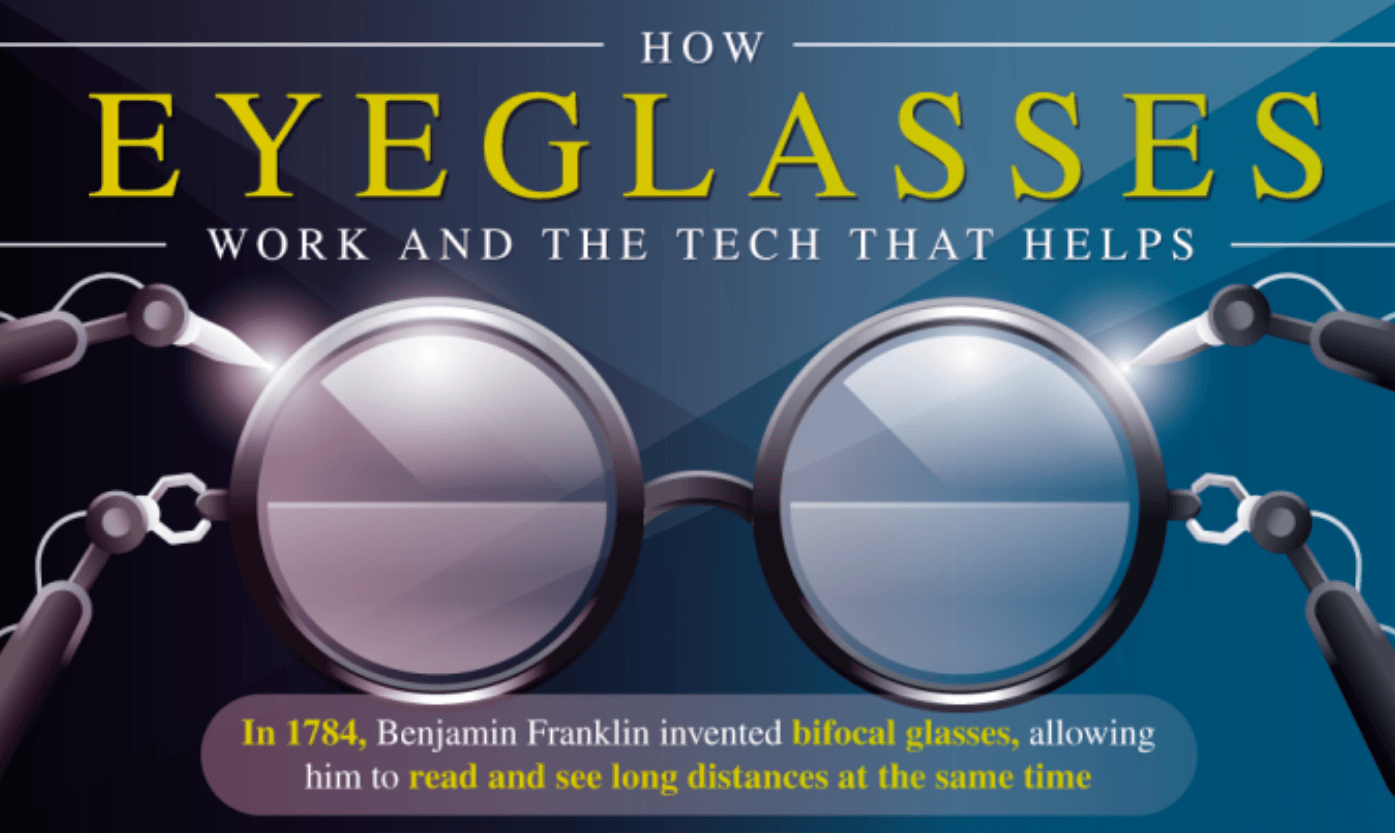Eyeglasses have literally been in our faces for centuries, but it seems the average Joe isn’t privy to how glasses work – or even optical terminology. 36% of Americans need glasses due to astigmatism: imperfectly curved corneas resulting in blurry vision due to a light refraction issue. On the other hand, 33% of Americans need glasses because they correct nearsightedness, causing light rays to focus in front of the retina instead of directly on it. The 4% minority experiencing farsightedness cannot find a focus point for light rays once they reach the retina. On top of this, 25% of people worldwide are affected by age-related farsightedness known as Presbyopia.
The science behind glasses is where it gets technical. In short, there are three types of lenses: convex, concave, and multifocal. Convex lenses are used to treat and correct nearsightedness. These lenses bend light rays toward the bottom and top of the lens once they approach the retina. This pushes the focal point to the back of the retina. As it may seem, the stronger the lens, the closer the focal point is to the lens.
Q3 2019 hedge fund letters, conferences and more
On the other hand, concave lenses bend inward to treat and correct nearsightedness. The strength of the prescription also changes with the degree of the curve. Concave lenses spread the light away from the center of the lens and moves the focal point closer - ultimately the opposite of convex. The stronger the lens, the farther the focal point is from the lens.
Fix nearsightedness and other purposes of glasses
The multifocal lense is exactly as it sounds: a blended prescription to correct multiple distance problems. Each lens is broken into sections dedicated to correct layers of vision problems. Progressive lenses have the same benefits as bifocals, or even trifocals, but without the visible lines of multifocal lenses.
Furthermore, new technology has increased the benefits for wearable glasses in comparison to traditional frames and lenses. In fact, there are a wide range of features and styles of glasses to choose from. If you are interested in a pair of glasses that will reduce glare and sunlight, check seek polarized or light-adaptive lenses. If your focus is on quality lens materials, prioritize finding high-index plastic or polycarbonate & trivex. There are also blue light blocking and color enhancing lenses to filter wavelengths.
Although glasses have come a long way since the 13th century, there are more plans for development. Check out the infographic below to learn about the future of eyeglasses - specifically about smart glasses, how to correct nearsightedness, nano-drops, and brain implants that can restore vision to those without.




